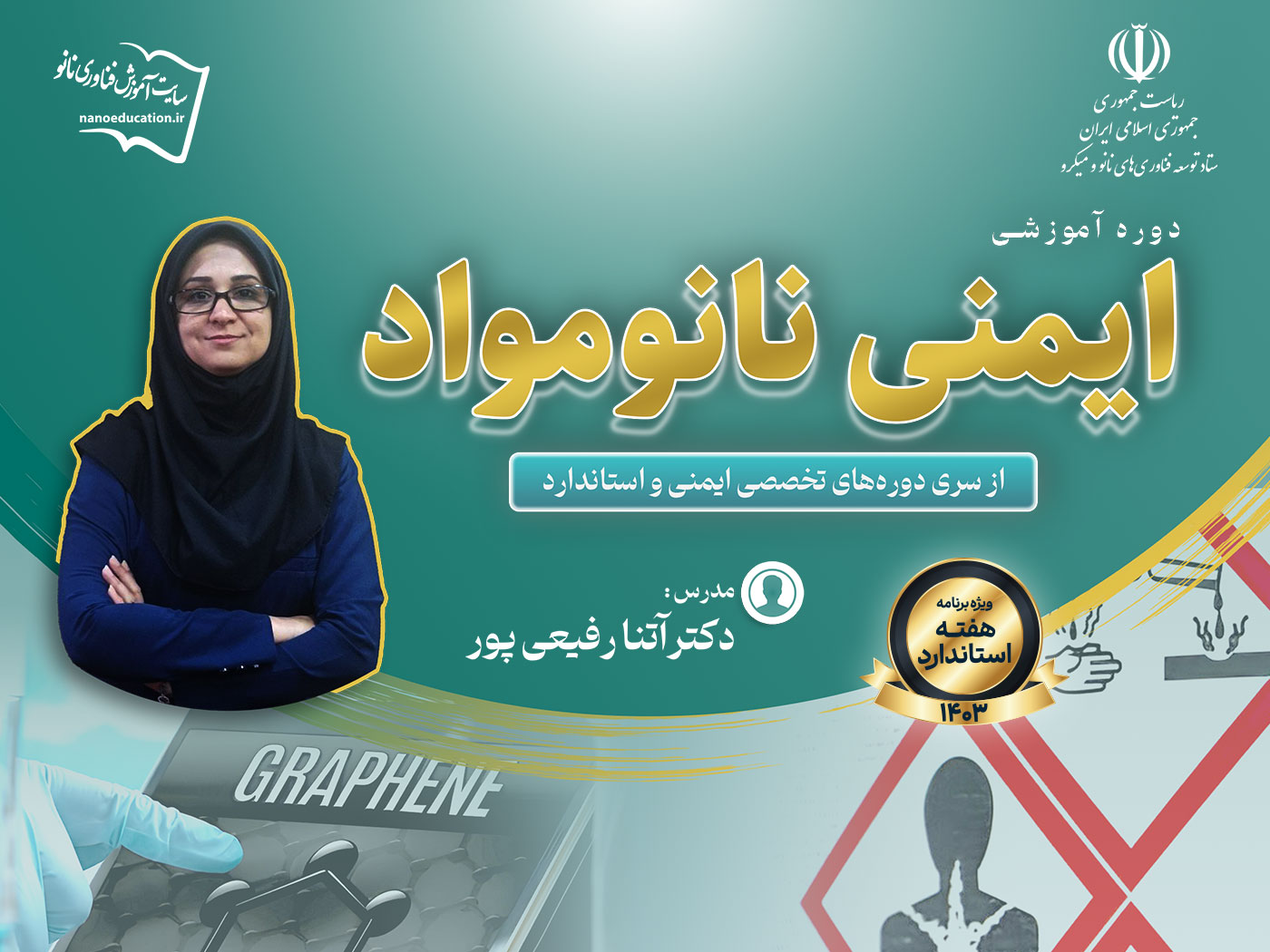نانومواد مهندسی شده و گیاهان-سمیّت گیاهی و بیوترانسفورماسیون 1
برهمکنش (interaction) بین نانومواد مهندسیشده و گیاهان حائز اهمیت است؛ چرا که گیاهان با آب، خاک و اتمسفر تماس مستقیم دارند و مسیر بالقوّه مواجهه گونههای عالیتر با این نانومواد از طریق زنجیرۀ غذایی است که گیاهان حلقۀ اصلی و منبع آن را تشکیل میدهند. اکثر مطالعاتی که در مورد سمیّت نانومواد صورت گرفته است در خصوص اثر آنها بر سلولهای انسانی و حیوانی است، با اینحال توجه اندکی به اثر آنها بر گیاهان معطوف شده است و این در حالی است که گیاهان بزرگترین رابط بین محیطزیست و زیستکره هستئد. هدف دو مقاله سمیّت گیاهی و بیوترانسفورماسیون، ارتقا درک ما در خصوص برخی اثرات متقابل نانومواد مهندسیشده با گیاهان ازجمله سمیّت آنها برای گیاه و بیوترانسفورماسیون یا تغییر شکل زیستی نانومواد در سیستم گیاهی است. سازوکارهای مربوط به سمیّت نانومواد برای گیاه و دسترسی زیستی به نانومواد هنوز بهخوبی درک نشدهاند. واضح است که در این شرایط، ارزیابیهای بیشتری در خصوص برهمکنش نانومواد و گیاهان و همچنین ایجاد روشهای جدید برای مشخصهیابی نانومواد در شرایط درونتنی (in vivo) لازم است تا بتوان از فناوری نانو بهصورت پایدار بهرهبرداری کرد.
این مقاله شامل سرفصلهای زیر است:
1- مقدمه
2- برهمکنش (اثر متقابل) بین نانومواد و گیاهان
1-2- نانومواد
2-2- مسمومیت گیاه ناشی از نانومواد مهندسیشده
3-2- نانومواد کربنی
4-2- نانومواد مبتنی بر فلز



لطفا برای مشاهده متن کامل مقاله ابتدا وارد سایت شوید
منابـــع و مراجــــع
۱ - Judy, J.D., J.M. Unrine,P.M. Bertsch; “Evidence for Biomagnification of Gold Nanoparticles within a Terrestrial Food Chain”, Environmental Science & Technology, Vol.45, I.2, p. 776-781, (2011).
۲ - Saleh TA; “Nanomaterials for Pharmaceuticals Determination”, Bioenergetics 5:226. doi:10.4172/2167-7662.1000226. (2016).
۳ - Canas, J.E., M. Long, S. Nations, R. Vadan, L. Dai, M. Luo, R. Ambikapathi, E.H. Lee,D. Olszyk; “Effects of functionalizednonfunctionalized single-walled carbon nanotubes on root elongation of crop species”, Environmental ToxicologyChemistry, Vol.27, I.9, p. 1922-1931, (2008)
۴ - Stampoulis, D., S.K. Sinha,J.C. White; “Assay-Dependent Phytotoxicity of Nanoparticles to Plants”, Environmental Science & Technology, Vol.43, I.24, p. 9473-9479, (2009).
۵ - Liu, Q., Y. Zhao, Y. Wan, J. Zheng, X. Zhang, C. Wang, X. Fang,J. Lin; “Study of the Inhibitory Effect of Water-Soluble Fullerenes on Plant Growth at the Cellular Level”, ACS Nano, Vol.4, I.10, p. 5743-5748, (2010)
۶ - Lin, S., J. Reppert, Q. Hu, J.S. Hudson, M.L. Reid, T.A. Ratnikova, A.M. Rao, H. Luo,P.C. Ke; “Uptake, translocation,transmission of carbon nanomaterials in rice plants”, Small, Vol.5, I.10, p. 1128-1132, (2009)
۷ - Liu, Q., X. Zhang, Y. Zhao, J. Lin, C. Shu, C. Wang,X. Fang; “Fullerene-Induced Increase of Glycosyl Residue on Living Plant Cell Wall”, Environmental Science & Technology, Vol.47, I.13, p. 7490-7498, (2013)
۸ - Avanasi, R., W.A. Jackson, B. Sherwin, J.F. Mudge,T.A. Anderson; “C60 Fullerene Soil Sorption, Biodegradation,Plant Uptake”, Environmental Science & Technology, Vol.48, I.5, p. 2792-2797, (2014)
۹ - Begum, P., R. Ikhtiari,B. Fugetsu; “Graphene phytotoxicity in the seedling stage of cabbage, tomato, red spinach,lettuce”, Carbon, Vol.49, I.12, p. 3907-3919, (2011)
۱۰ - Miralles, P., T.L. Church,A.T. Harris; “Toxicity, Uptake,Translocation of Engineered Nanomaterials in Vascular plants”, Environmental Science & Technology, Vol.46, I.17, p. 9224-9239, (2012)
۱۱ - Anjum, N.A., N. Singh, M.K. Singh, I. Sayeed, A.C. Duarte, E. Pereira,I. Ahmad; “Single-bilayer graphene oxide sheet impactsunderlying potential mechanism assessment in germinating faba bean (Vicia faba L.)”, Science of the Total Environment, Vol.472, p. 834-841, (2014)
۱۲ - Gao, F., C. Liu, C. Qu, L. Zheng, F. Yang, M. Su,F. Hong; “Was improvement of spinach growth by nano-TiO2 treatment related to the changes of Rubisco activase?”, BioMetals, Vol.21, I.2, p. 211-217, (2008)
۱۳ - Ghosh, M., M. Bandyopadhyay,A. Mukherjee; “Genotoxicity of titanium dioxide (TiO2) nanoparticles at two trophic levels: Planthuman lymphocytes”, Chemosphere, Vol.81, I.10, p. 1253-1262, (2010)
۱۴ - Wang, P., N.W. Menzies, E. Lombi, B.A. McKenna, B. Johannessen, C.J. Glover, P. Kappen,P.M. Kopittke; “Fate of ZnO Nanoparticles in SoilsCowpea (Vigna unguiculata)”, Environmental Science & Technology, Vol.47, I.23, p. 13822-13830, (2013)
۱۵ - Clément, L., C. Hurel,N. Marmier; “Toxicity of TiO2 nanoparticles to cladocerans, algae, rotifersplants – Effects of sizecrystalline structure”, Chemosphere, Vol.90, I.3, p. 1083-1090, (2013)
۱۶ - López-Moreno, M.L., G. de la Rosa, J.Á. Hernández-Viezcas, H. Castillo-Michel, C.E. Botez, J.R. Peralta-Videa,J.L. Gardea-Torresdey; “Evidence of the Differential BiotransformationGenotoxicity of ZnOCeO2 Nanoparticles on Soybean (Glycine max) Plants”, Environmental Science & Technology, Vol.44, I.19, p. 7315-7320, (2010)
۱۷ - López-Moreno, M.L., G. de la Rosa, J.A. Hernández-Viezcas, J.R. Peralta-Videa,J.L. Gardea-Torresdey; “X-ray Absorption Spectroscopy (XAS) Corroboration of the UptakeStorage of CeO2 NanoparticlesAssessment of Their Differential Toxicity in Four Edible Plant Species”, Journal of AgriculturalFood Chemistry, Vol.58, I.6, p. 3689-3693, (2010)
۱۸ - Priester, J.H., Y. Ge, R.E. Mielke, A.M. Horst, S.C. Moritz, K. Espinosa, J. Gelb, S.L. Walker, R.M. Nisbet, Y.-J. An, J.P. Schimel, R.G. Palmer, J.A. Hernandez-Viezcas, L. Zhao, J.L. Gardea-Torresdey,P.A. Holden; “Soybean susceptibility to manufactured nanomaterials with evidence for food qualitysoil fertility interruption”, Proceedings of the National Academy of Sciences, Vol.109, I.37, p. E2451–E2456, (2012)
۱۹ - Ma, Y., X. He, P. Zhang, Z. Zhang, Z. Guo, R. Tai, Z. Xu, L. Zhang, Y. Ding, Y. Zhao,Z. Chai; “Phytotoxicitybiotransformation of La2O3 nanoparticles in a terrestrial plant cucumber (Cucumis sativus)”, Nanotoxicology, Vol.5, I.4, p. 743-753, (2011)
۲۰ - Levard, C., E.M. Hotze, G.V. Lowry,G.E. Brown; “Environmental Transformations of Silver Nanoparticles: Impact on StabilityToxicity”, Environmental Science & Technology, Vol.46, I.13, p. 6900-6914, (2012)
۲۱ - Dimkpa, C.O., J.E. McLean, D.E. Latta, E. Manangón, D.W. Britt, W.P. Johnson, M.I. Boyanov,A.J. Anderson; “CuOZnO nanoparticles: phytotoxicity, metal speciation,induction of oxidative stress in sand-grown wheat”, Journal of Nanoparticle Research, Vol.14, I.9, p. 1125, (2012)
۲۲ - Gardea-Torresdey, J.L., C.M. Rico,J.C. White; “Trophic Transfer, Transformation,Impact of Engineered Nanomaterials in Terrestrial Environments”, Environmental Science & Technology, Vol.48, I.5, p. 2526-2540, (2014)
۲۳ - Zhang, P., Y. Ma, Z. Zhang, X. He, Y. Li, J. Zhang, L. Zheng,Y. Zhao; “Species-specific toxicity of ceria nanoparticles to Lactuca plants”, Nanotoxicology, Vol.9, I.1, p. 1-8, (2015)
۲۴ - Bais, H.P., T.L. Weir, L.G. Perry, S. Gilroy,J.M. Vivanco; “THE ROLE OF ROOT EXUDATES IN RHIZOSPHERE INTERACTIONS WITH PLANTSOTHER ORGANISMS”, Annual Review of Plant Biology, Vol.57, I.1, p. 233-266, (2006)
۲۵ - Morel, J.L., M. Mench,A. Guckert; “Measurement of Pb2+, Cu2+Cd2+ binding with mucilage exudates maize (Zea mays L.) roots”, BiologyFertility of Soils, Vol.2, I.1, p. 29-34, (1986)
۲۶ - Yin, L., Y. Cheng, B. Espinasse, B.P. Colman, M. Auffan, M. Wiesner, J. Rose, J. Liu,E.S. Bernhardt; “More than the Ions: The Effects of Silver Nanoparticles on Lolium multiflorum”, Environmental Science & Technology, Vol.45, I.6, p. 2360-2367, (2011)
۲۷ - Gaiser, B.K., T.F. Fernandes, M. Jepson, J.R. Lead, C.R. Tyler,V. Stone; “Assessing exposure, uptaketoxicity of silvercerium dioxide nanoparticles contaminated environments”, Environmental Health, Vol.8, I.1, p. S2, (2009)
۲۸ - Zhang P, Ma Y, Zhang Z; “Biotransformation of ceria nanoparticles in cucumber plants”, ACS Nano 6:9943–9950. (2012)
۲۹ - Allen, B.L., P.D. Kichambare, P. Gou, I.I. Vlasova, A.A. Kapralov, N. Konduru, V.E. Kagan,A. Star; “Biodegradation of Single-Walled Carbon Nanotubes through Enzymatic Catalysis”, Nano Letters, Vol.8, I.11, p. 3899-3903, (2008)
۳۰ - Salas, E.C., Z. Sun, A. Lüttge,J.M. Tour; “Reduction of Graphene Oxide via Bacterial Respiration”, ACS Nano, Vol.4, I.8, p. 4852-4856, (2010)












